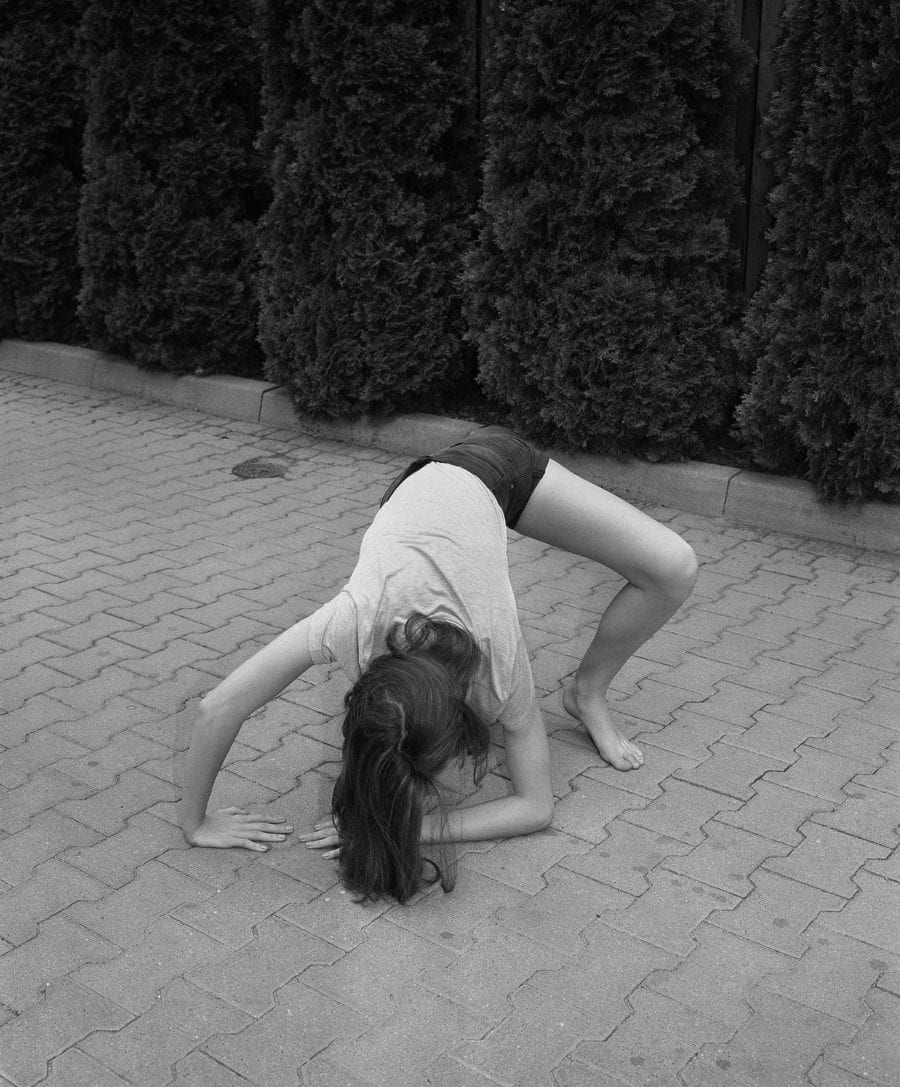A new show at Princeton University Art Museum suggests the physical, the intimate, and the lived as key concerns in photography and contemporary culture


A new show at Princeton University Art Museum suggests the physical, the intimate, and the lived as key concerns in photography and contemporary culture

Stable Vices collates three bodies of work that collectively address the complexity of power dynamics, and modes of oppression and control, through enigmatic black-and-white images

Born in Poland in 1985 and based in London, Joanna Piotrowska has had a stellar career so far. Studying photography at the Academy of Fine Arts in Kraków and then on the prestigious MA at London’s Royal College of Art, she won MACK’s First Book Award in 2014 with FROWST, and then the Photoworks & Jerwood Award in 2015. She’s already shown her work at the Winterthur Fotomuseum, Switzerland, MoMA in New York, Hayward Gallery, Institute of Contemporary Arts and Sadie Coles in London, and now her first solo show has opened at Tate Britain.
Titled All Our False Devices, the exhibition includes both still photographs and 16mm films to consider gestures, relationships, and power. The series Self Defense, 2015 shows young women re-enacting poses from self-defence manuals, for example, while Shelters, 2016-2018 shows makeshift structures Piotrowska invited people to build at home in Lisbon, Rio de Janeiro, Warsaw, and London.

The director of the respected bookshop in Paris’ Le Bal gallery picks out her favourite photography and projects, including Joanna Piotrowska’s Frantic

It’s free to enter, anyone from anywhere can enter, it’s helped launch photographers such as Paul Salveson, Joanna Piotrowska, and Emmanuelle Andrianjafy, and its winner is announced at Photo London and publishes a book with the prestigious MACK. It is the First Book Award, and in just eight years it’s become a firm fixture on the photobook calendar – and yet so far it’s only received 300 or so submissions per year. How come?
Well, until now MACK has organised it with the help of an international panel of nominators, meaning that only those photographers recommended by this group of curators, editors, and educators could get involved. But now all that’s changed, with the first-ever open-entry First Book Award accepting dummies from anyone who wants to submit. “One of the things we are attempting to remove is the notion that unless you’re connected, unless you’re in the know and have contacts in that sphere, you can’t go forward,” says Michael Mack, founder of MACK. “We want to discourage that idea.”

Would you like to join Magnum Photos? The agency is inviting photographers worldwide to submit their portfolios online by 31 January to be considered for nominee status.
Magnum will accept digital submissions from all professional photographers, and entries for June 2019 can be made through this website: https://contests.picter.com/magnum-photos/submissions-2019/ Applicants are required to submit two to three projects, with up to 80 photographs in total. The new nominee members will be announced on 01 July 2019.
In addition MACK is accepting open submissions for its First Book Award this year – in contrast to previous years, in which photographers were nominated by a panel of industry insiders. The prize is open to any photographer or artist who has not previously published work with a third party company, and entries are invited from 12 November 2018 – 21 January 2019. All entries must be paper book dummies; digital submissions are not accepted.

From mass shootings to a family hotel – the shortlist for the 2018 First Book Award is nothing if not eclectic. Set up in 2012 to support emerging talent, the First Book Award is open to previously unpublished photographers who have been nominated by an international panel of experts, and previous winners include Irish photographer Ciarán Óg Arnold, Polish photographer Joanna Piotrowska, and Malagasy photographer Emmanuelle Andrianjafy. The ten shortlisted photographers this year come from all over the world, including Indian photographer Tenzing Dapka, Japanese photographer Hayahisa Tomiyasu, and Australian photographer Lionel Kiernan.

When New York’s Museum of Modern Art first introduced its New Photography series, it did so to locate contemporary work in a dedicated space, often providing the selected image-makers with the opportunity to get their foot in that most revered of doors. The inaugural exhibition opened in August 1985, curated by the late, great John Szarkowski, and over the following 32 years, these shows have remained true to their moniker, tracking some of the most exciting developments in new photography in its myriad forms – be that in books, on screens, in posters or through zines. As the years brought evolved types of media, it fed artists’ appetites both for new ideas and for fresh means by which to execute them. MoMA’s latest instalment, Being: New Photography 2018 (18 March–19 August), is a deft demonstration of how effectively such collections can reflect a moment in contemporary consciousness. Being presents 17 artists working in photo-based media around the world, and “all the works in the exhibition take on charged and layered notions of personhood and subjectivity,” explains Lucy Gallun, its curator and the assistant curator of MoMA’s department of photography.